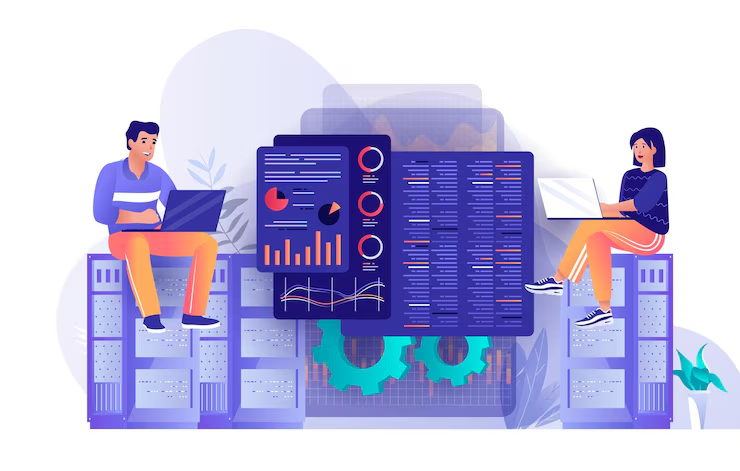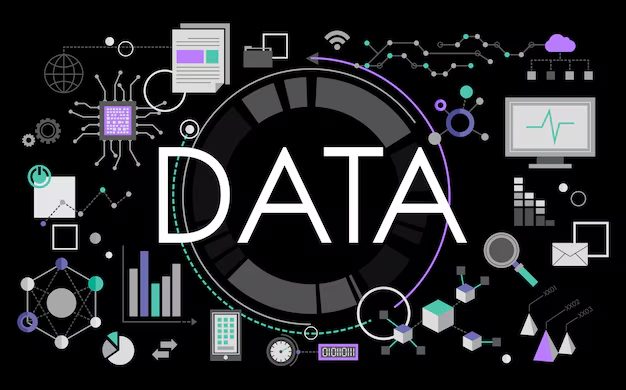Data Engineering 101: What Every Business Leader Should Know
Table of Contents
Introduction: Why Data Engineering Matters More Than Ever
Ever try building Ikea furniture without the instructions? Now imagine doing that, but it’s your entire business—and the screws are your data.
That’s what it feels like to lead without a data foundation. Data engineering is the blueprint and the toolkit, quietly powering your dashboards, reports, forecasts, and even the buzzwords your team keeps throwing around. Without it, all your fancy tools are just guesswork.
Here’s the deal: If you want to actually trust your data and make decisions with confidence, you need to understand what’s happening under the hood. No, you don’t have to write code—but you do need to know what good data infrastructure looks like.
Let’s unpack the world of data engineering in plain English.

What Is Data Engineering, Really?
The Backbone of Modern Data Systems
Think of data engineers as the architects of your digital ecosystem. They build the systems that get your data from Point A to Point B—and make sure it doesn’t turn into a hot mess along the way.
They’re not just managing databases or running reports. They’re setting up the pipelines, structuring the data, and making sure it all actually works when you hit “run” on that dashboard.
It’s Not Just IT Stuff
Forget the image of some lonely developer in a dark room. Today’s data engineers work side-by-side with analysts, product teams, marketing, ops—you name it. They bridge the gap between raw data and actual business value.
More Than Code—It’s Strategy
It’s not just about syntax. Good data engineering aligns with your goals. Want to personalize customer experiences? Improve margins? Launch a new product? That all starts with data infrastructure that supports your business vision.
Why Business Leaders Should Care
Data Is the New Currency
Let’s put it this way: If your data disappeared tomorrow, how badly would it hurt? Most businesses wouldn’t last a week. Your data tells the story of your customers, operations, and growth opportunities. That makes it one of your most valuable assets—and like any asset, it needs structure, security, and strategy.
The Cost of Ignorance
Dirty data costs money. A lot of it. Think bad forecasts, wrong inventory, missed opportunities. The longer you wait to get your data act together, the bigger the mess—and the costlier the cleanup.
Competitive Advantage
Top companies don’t just gather data. They engineer it, shape it, and put it to work. That’s how they move faster, innovate more confidently, and make decisions backed by real insight—not hunches.
Key Concepts in Data Engineering
Data Pipelines
Imagine a high-speed train shuttling information from system to system. That’s your data pipeline. It automates the collection, movement, and transformation of data across your tools and platforms.
ETL vs. ELT
ETL (Extract, Transform, Load): This approach cleans and reshapes data before it lands in your warehouse.
ELT (Extract, Load, Transform): This flips the script—get it all into the warehouse first, then tidy it up. It’s faster, especially for cloud-first setups.
Data Warehouses vs. Data Lakes
- Warehouse: Think of this as your clean, well-organized spreadsheet on steroids.
- Lake: More like a digital junk drawer—messy but full of potential. Useful for raw, exploratory data.
Data Modeling
This is where structure meets strategy. Data modeling defines how your data is organized so it makes sense to your analysts and tools. It’s like creating a floor plan for a building—essential before you start stacking floors.

Data Engineering Tools That Make It Happen
Apache Airflow
This tool automates workflows. Need to pull sales data every morning and update your dashboard? Airflow’s got your back. It’s like setting your coffee machine to brew at 7 AM—only for your data.
dbt (Data Build Tool)
dbt lets your team transform raw data into clean, usable datasets—all within your data warehouse. It’s open-source, developer-friendly, and surprisingly easy to learn.
Cloud Warehouses: Snowflake, BigQuery, Redshift
These platforms offer scalable, pay-as-you-go data storage and querying. No need for clunky hardware or surprise outages—just fast, reliable access to your data.
Apache Kafka
Great for real-time data. It moves data between systems as it’s generated—perfect for fraud detection, real-time dashboards, or any situation where “now” really matters.
Building Your Dream Data Team
Who You’ll Need
- Data Engineers: Set up and maintain your data infrastructure.
- Data Analysts: Translate raw data into insights.
- Data Scientists: Use modeling and machine learning to predict outcomes.
In-House vs. Outsourced
Not every business needs a full team out of the gate. Startups might partner with agencies (like Engine Analytics), while scaling companies might invest in building internal expertise.
Don’t Overlook Soft Skills
Technical chops are important—but so is the ability to communicate. A data engineer who can explain what they’re doing in plain English? That’s gold.
Data Quality and Governance
Garbage In, Garbage Out
All the analytics in the world won’t help you if your data is riddled with errors, duplicates, and inconsistencies.
Validation and Monitoring
Put checks in place to catch bad data before it spreads. Monitor pipelines, use alerts, and fix issues before they snowball.
Governance Matters
Who owns what data? Who can access what? Establish roles, responsibilities, and rules for how data is handled. This keeps your business compliant—and your data secure.
Scaling Smartly
Start Simple, Then Scale
You don’t need to adopt every tool and process all at once. Begin with your biggest data pain point and build from there.
Automate Where You Can
Manual data updates? Recipe for disaster. Automate repetitive tasks so your team can focus on analysis, not busywork.
Measure Performance
Set benchmarks. Track how long pipelines take, how reliable your reporting is, and what business decisions improve with better data.
Common Pitfalls to Avoid
Going Too Big Too Fast
You don’t need a Silicon Valley stack if you’re just starting out. Choose tools that match your current needs and grow with you.
Poor Documentation
If your lead data engineer quits and nobody knows how the systems work—that’s a problem. Document everything.
Siloed Systems
Data shouldn’t live in departmental bunkers. Encourage collaboration and create systems that talk to each other.

Business Intelligence & Data Engineering: The Dream Team
Better Dashboards, Better Decisions
Data engineering fuels tools like Looker, Tableau, or Power BI with clean, timely data. That means faster decisions and fewer “let me check on that” delays.
Real-Time Insights
Want to see yesterday’s sales this morning? Or monitor website activity minute-by-minute? That’s the power of real-time pipelines.
Security and Compliance: Don’t Skip This
Compliance Isn’t Optional
Regulations like GDPR or HIPAA aren’t just red tape—they’re real. Your data engineering setup should follow best practices from day one.
Role-Based Access
Not everyone needs access to everything. Set clear permissions so employees only see the data they need.
Encrypt Everything
Whether it’s at rest or in transit, your data should be encrypted. It’s like locking your front door—basic but essential.
Where Things Are Headed
DataOps
This is the future of managing data workflows—think faster releases, fewer bugs, and more collaboration between teams.
AI-Assisted Engineering
From pipeline optimization to anomaly detection, AI tools are starting to help engineers work smarter.
Serverless Solutions
Let cloud providers handle the infrastructure. You focus on the data.
So, Where Do You Start?
Audit Your Setup
Figure out where your data lives, how it flows, and who touches it.
Define Business Goals
Don’t build tech for tech’s sake. Know what you want—better reports, predictive insights, faster operations—and build for that.
Bring in the Pros
Partner with data engineering experts like Engine Analytics to build your foundation right the first time.
Conclusion: Build the Foundation, Reap the Rewards
Here’s the truth: You don’t need to become a data engineer to lead a data-savvy business. But you do need to understand what’s possible—and what’s at stake.
Data engineering is the silent force behind better decisions, smarter tools, and real growth. Get your systems in place, build a solid team, and make data part of your company’s DNA.
Because when your data works, everything else runs smoother.
Here’s Some Interesting FAQs for You
1. What’s the difference between data science and data engineering?
Data science and data engineering are two sides of the same data coin. Data engineers design and build the infrastructure—pipelines, warehouses, and systems—that make data usable. They ensure that the right data is available, clean, and in the right format. Data scientists, on the other hand, analyze that data to discover patterns, build predictive models, and provide strategic insights. Without engineers, scientists wouldn’t have reliable data to work with.
2. Do I need both a data warehouse and a data lake?
Not necessarily—it depends on your needs. A data warehouse is best for structured data and analytics. It’s fast, organized, and ideal for dashboards and reporting. A data lake stores raw, unstructured data—perfect for long-term storage, exploratory analysis, and machine learning. Many companies start with a warehouse and adopt a data lake as their analytics needs become more complex.
3. How long does it take to set up a data engineering pipeline?
The timeline varies based on complexity and goals. A basic pipeline using off-the-shelf cloud tools can be operational in a few days. More complex setups—integrating multiple data sources, real-time processing, custom transformations—can take several weeks or months. The key is to start small, with high-value data sources, and expand from there.




